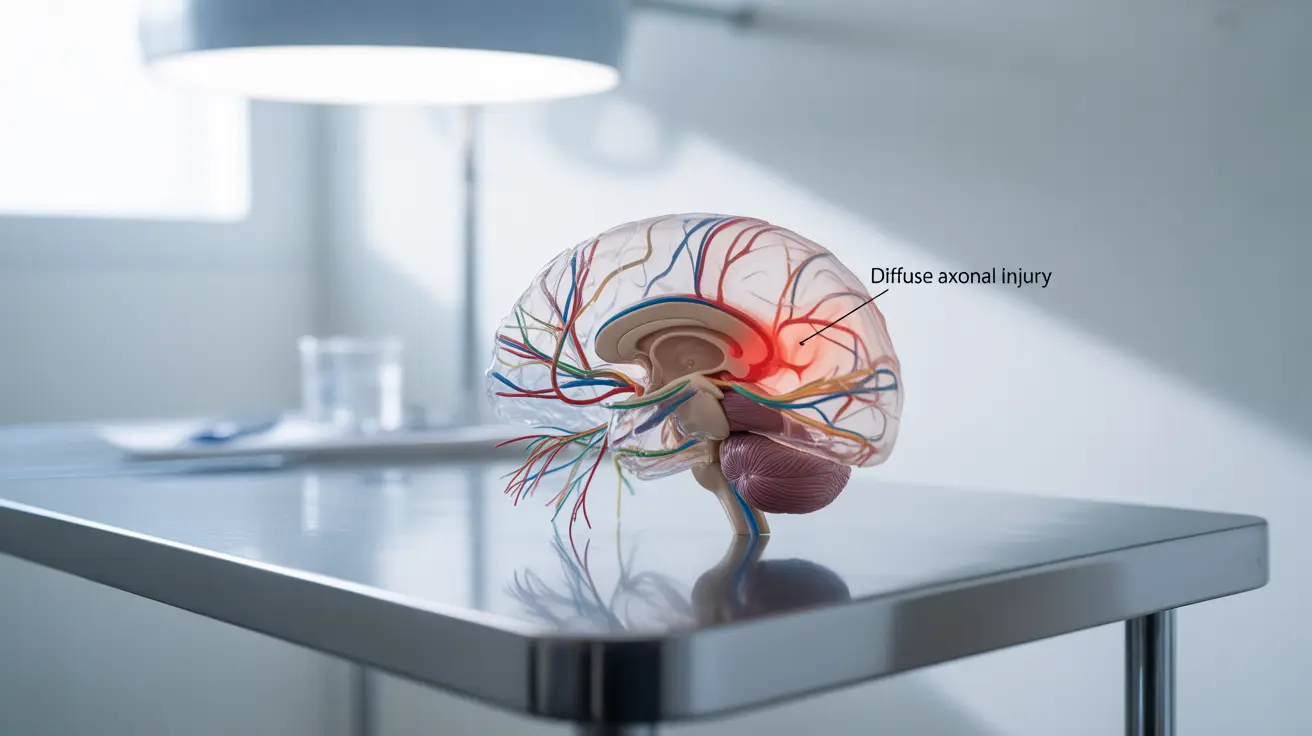Diffuse axonal injury (DAI) is a serious form of traumatic brain injury that occurs when the brain's nerve fibers (axons) are damaged due to rapid acceleration, deceleration, or rotation of the head. This type of injury can have profound effects on a person's physical and cognitive functions, making early recognition and proper medical care crucial for the best possible outcomes.
Understanding the symptoms, treatment options, and prevention strategies for diffuse axonal injury is essential for both medical professionals and the general public. This comprehensive guide will explore the key aspects of DAI, including its presentation in different age groups and the latest approaches to rehabilitation.
Recognition and Initial Symptoms
The symptoms of diffuse axonal injury can vary significantly in severity and presentation. Common initial signs include:
- Loss of consciousness (ranging from brief to prolonged)
- Confusion and disorientation
- Severe headaches
- Nausea and vomiting
- Balance problems
- Memory difficulties
In more severe cases, patients may experience:
- Extended periods of unconsciousness or coma
- Persistent vegetative state
- Significant cognitive impairments
- Motor function difficulties
- Changes in emotional regulation
Age-Specific Manifestations
Children and Adolescents
Young patients may show different symptoms compared to adults, including:
- Increased irritability or crying
- Changes in eating or sleeping patterns
- Difficulty with school work
- Problems with coordination
- Mood swings or behavioral changes
Adults
Adult patients typically experience:
- More pronounced cognitive difficulties
- Challenges with executive functioning
- Problems with attention and concentration
- Physical coordination issues
- Memory lapses
Diagnosis and Assessment
Healthcare providers use various tools to diagnose and evaluate DAI severity:
- MRI and specialized imaging techniques
- Glasgow Coma Scale assessment
- Cognitive function tests
- Physical examination
- Neurological evaluations
Recovery and Rehabilitation
The recovery process for diffuse axonal injury often involves multiple therapeutic approaches:
- Physical therapy for motor function improvement
- Occupational therapy for daily living skills
- Speech and language therapy
- Cognitive rehabilitation
- Psychological support and counseling
Prevention Strategies
While not all cases of DAI can be prevented, certain measures can help reduce risk:
- Wearing appropriate protective gear during sports
- Using proper safety equipment in vehicles
- Following safety protocols in high-risk activities
- Maintaining safe playing surfaces
- Implementing proper training techniques
Frequently Asked Questions
What are the main symptoms of diffuse axonal injury in adults and children?
The main symptoms include loss of consciousness, confusion, headaches, and balance problems. Children may show additional signs like increased irritability and changes in eating or sleeping patterns, while adults typically experience more pronounced cognitive difficulties and executive function challenges.
How long does loss of consciousness typically last with diffuse axonal injury, and what does that mean for recovery?
Loss of consciousness can range from brief moments to extended periods of coma, depending on injury severity. The duration often correlates with recovery prospects - shorter periods typically indicate better outcomes, while longer periods may suggest more challenging recovery journeys.
Can someone have diffuse axonal injury without losing consciousness, and what other signs should I watch for?
Yes, it's possible to have DAI without losing consciousness. Key signs to watch for include confusion, persistent headaches, memory problems, coordination difficulties, and changes in mood or behavior. Any combination of these symptoms following head trauma warrants immediate medical attention.
What types of therapy and rehabilitation are most helpful for recovery after diffuse axonal injury?
A comprehensive rehabilitation program typically includes physical therapy, occupational therapy, speech therapy, and cognitive rehabilitation. The specific combination depends on individual symptoms and needs, with treatment plans adjusted as recovery progresses.
Are there ways to prevent or reduce the risk of diffuse axonal injury during sports or everyday activities?
Prevention strategies include wearing appropriate protective gear during sports, using proper safety equipment in vehicles, following safety protocols, and maintaining safe environments. Regular training in proper techniques for high-risk activities can also help reduce injury risk.




